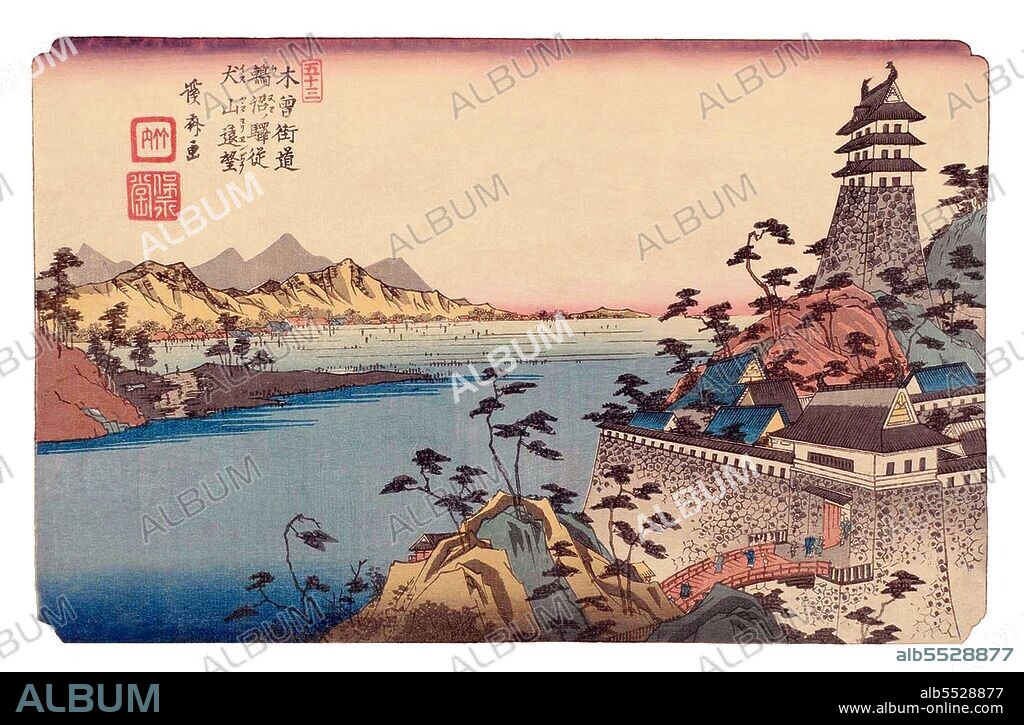alb5528877
Japan: Unuma-juku (???), Station 52 of 'The Sixty-Nine Stations of the Nakasendo (Kisokaido) ' Keisai Eisen (1835-1838)

|
Añadir a otro lightbox |
|
Añadir a otro lightbox |



¿Ya tienes cuenta? Iniciar sesión
¿No tienes cuenta? Regístrate
Compra esta imagen

Título:
Japan: Unuma-juku (???), Station 52 of 'The Sixty-Nine Stations of the Nakasendo (Kisokaido) ' Keisai Eisen (1835-1838)
Descripción:
Traducción automática: Las Sesenta y Nueve Estaciones del Kiso Kaido (???????? Kiso Kaido Rokujukyu-tsugi) o Sesenta y Nueve Estaciones del Camino Kiso, es una serie de obras ukiyo-e creadas por Utagawa Hiroshige (1797-1858) ) y Keisai Eisen (1790-1848). Hay 71 impresiones en total en la serie (una para cada una de las 69 estaciones de correos y Nihonbashi; Nakatsugawa-juku tiene dos impresiones). El nombre común de Kiso Kaido es 'Nakasendo' o 'Central Mountain Highway', por lo que esta serie también se conoce comúnmente como las Sesenta y Nueve Estaciones de Nakasendo. El Nakasendo fue una de las Cinco Rutas construidas bajo Tokugawa Ieyasu, una serie de caminos que unían la capital histórica de Edo con el resto de Japón. El Nakasendo conectaba Edo con la entonces capital de Kioto. Era una ruta alternativa al Tokaido y viajaba a través de la parte central de Honshu, dando así origen a su nombre, que significa 'Camino Central de la Montaña'. A lo largo de este camino, había sesenta y nueve estaciones postales diferentes ( -shuku o -juku ), que proporcionaban establos, comida y alojamiento para los viajeros. Eisen produjo las primeras 11 copias de la serie, desde Nihonbashi hasta Honjo-shuku, desde Tokio hasta la prefectura de Saitama. Después de eso, Hiroshige se hizo cargo de la producción de la serie.
The Sixty-nine Stations of the Kiso Kaido (???????? Kiso Kaido Rokujukyu-tsugi) or Sixty-nine Stations of the Kiso Road, is a series of ukiyo-e works created by Utagawa Hiroshige (1797-1858) and Keisai Eisen (1790-1848). There are 71 total prints in the series (one for each of the 69 post stations and Nihonbashi; Nakatsugawa-juku has two prints). The common name for the Kiso Kaido is 'Nakasendo' or 'Central Mountain Highway', so this series is salso commonly referred to as the Sixty-nine Stations of the Nakasendo. The Nakasendo was one of the Five Routes constructed under Tokugawa Ieyasu, a series of roads linking the historical capitol of Edo with the rest of Japan. The Nakasendo connected Edo with the then-capital of Kyoto. It was an alternate route to the Tokaido and travelled through the central part of Honshu, thus giving rise to its name, which means 'Central Mountain Road'. Along this road, there were sixty-nine different post stations (-shuku or -juku), which provided stables, food, and lodging for travelers. Eisen produced the first 11 prints of the series, from Nihonbashi to Honjo-shuku, stretching from Tokyo to Saitama Prefecture. After that, Hiroshige took over production of the series.
Crédito:
Album / Pictures From History/Universal Images Group
Autorizaciones:
Modelo: No - Propiedad: No
¿Preguntas relacionadas con los derechos?
¿Preguntas relacionadas con los derechos?
Tamaño imagen:
5100 x 3349 px | 48.9 MB
Tamaño impresión:
43.2 x 28.4 cm | 17.0 x 11.2 in (300 dpi)
Palabras clave:
ANDO HIROSHIGE • ART • ARTE • ARTES • ASIA • ASIATICO • BLOQUE DE MADERA • COMERCIO • DIPLOMACIA • EDO • HIROSHIGE UTAGAWA • HIROSHIGE, ANDO • HISTORIA • HISTORICO • JAPON • JAPONES • KEISAI EISEN • KYOTO • PINTURA • PLANCHA DE MADERA • RUTA COMERCIAL • RUTAS COMERCIALES • TOKIO • TOKYO • TRANSPORTE • UKIYO-E • UTAGAWA HIROSHIGE • UTAGAWA
 Pinterest
Pinterest Twitter
Twitter Facebook
Facebook Copiar enlace
Copiar enlace Email
Email
